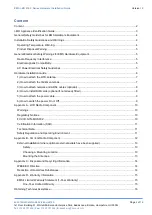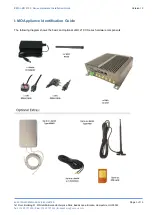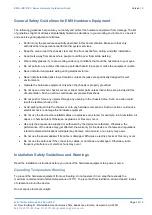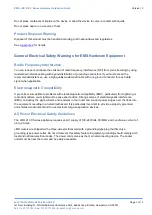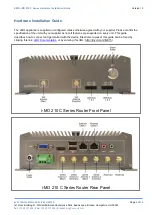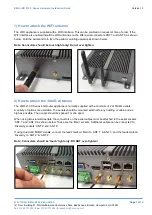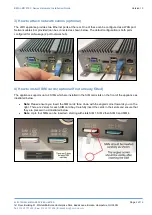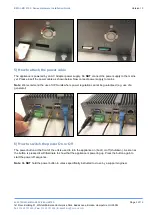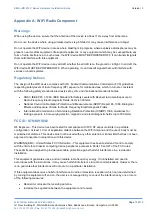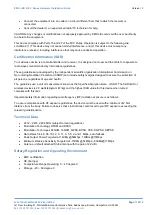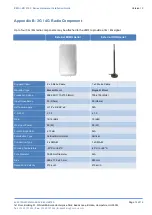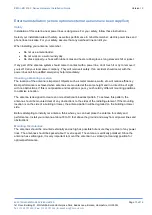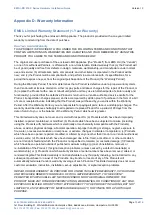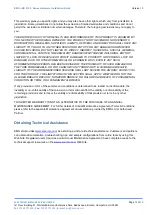
EMS i-MO 210 C Series Hardware Installation Guide
Version
1.0
ELECTRONIC MEDIA SERVICES LIMITED
1st Floor, Building 51, Whitehill & Bordon Enterprise Park, Budds Lane, Bordon, Hampshire, GU35 0FJ
Tel:
01428 751655 |
Fax:
01428 751654 |
E-mail:
imo@ems-uk.com
Page
5
of
16
Do not place containers of liquids on the device or allow the device to come in contact with liquids.
Do not place near or on a source of heat.
Product Disposal Warning
Disposal of this product must be handled according to all national laws and regulations.
General Electrical Safety Warnings for EMS Hardware Equipment
Radio Frequency Interference
You can reduce or eliminate the emission of radio frequency interference (RFI) from your site wiring by using
twisted-pair network cabling with a good distribution of grounding conductors. If you must exceed the
recommended distances, use a high-quality twisted-pair cable with one ground conductor for each data
signal when applicable.
Electromagnetic Compatibility
If your site is susceptible to problems with electromagnetic compatibility (EMC), particularly from lightning or
radio transmitters, you might want to seek expert advice. Strong sources of electromagnetic interference
(EMI) can destroy the signal drivers and receivers in the router and conduct power surges over the lines into
the equipment, resulting in an electrical hazard. It is particularly important to provide a properly grounded
and shielded environment and to use electrical surge-suppression devices.
AC Power Electrical Safety Guidelines
The i-MO 210 C Series appliance requires an AC supply of 100-240Volts, 50/60Hz and can draw a current of
up to 2 Amps.
i-MO routers are shipped with a three-wire electrical cord with a grounding-type plug that fits only a
grounding-type power outlet. Do not circumvent this safety feature. Equipment grounding should comply with
local and national electrical codes. The power cord serves as the main disconnecting device. The socket
outlet must be near the router and be easily accessible.


